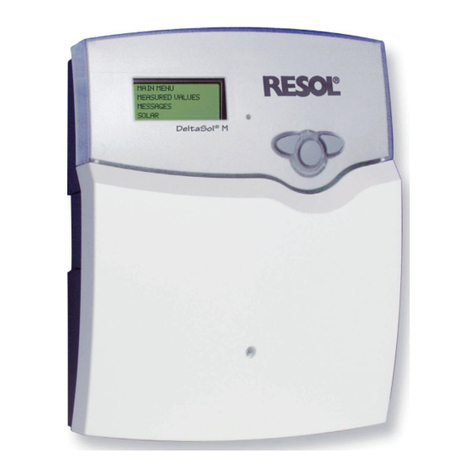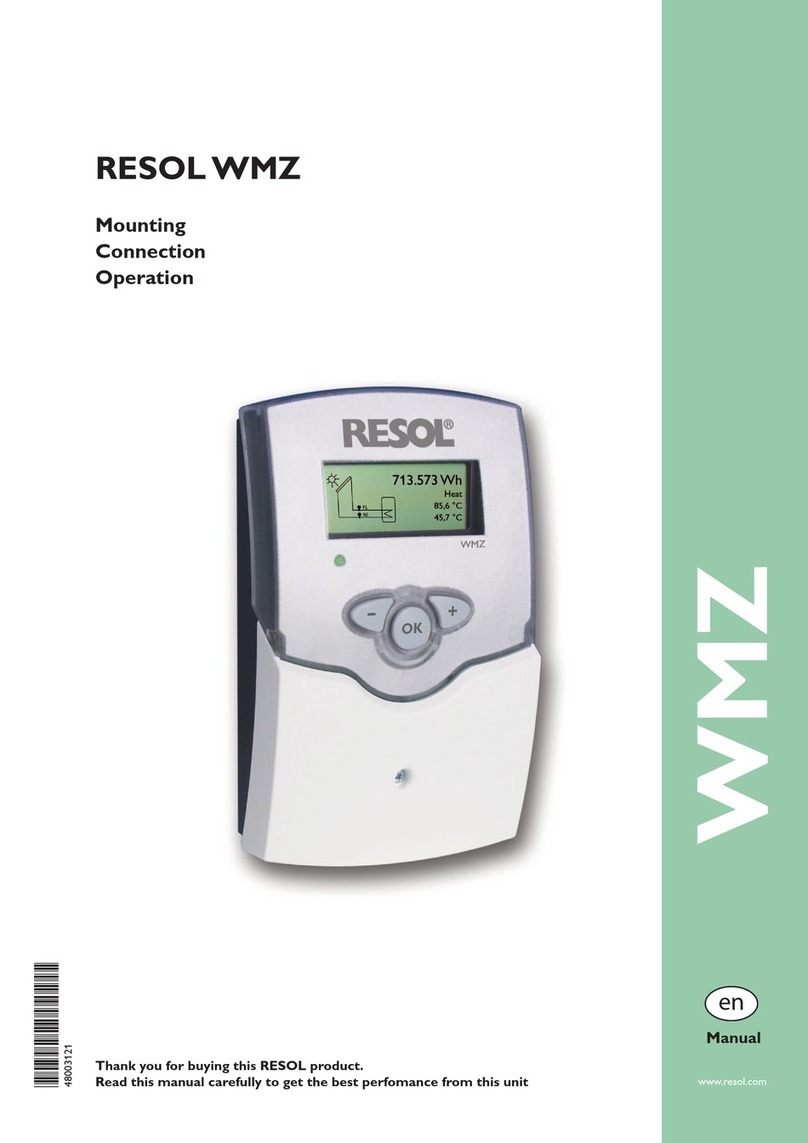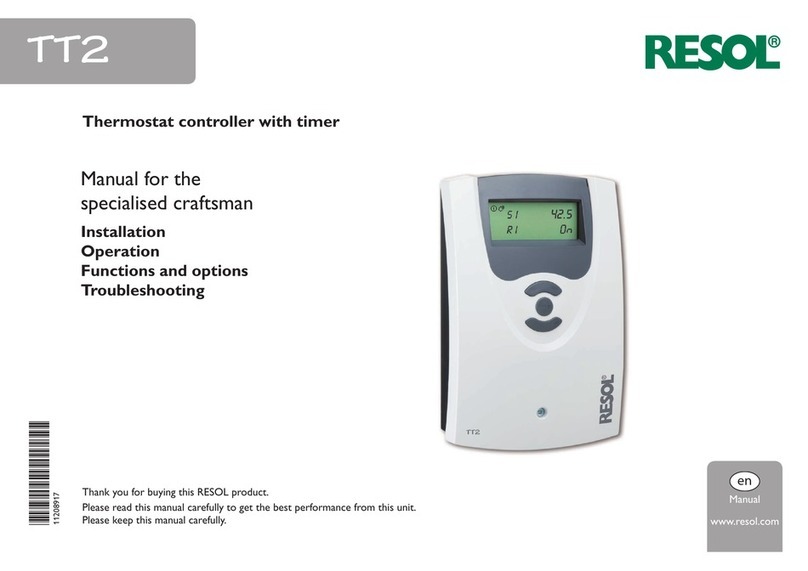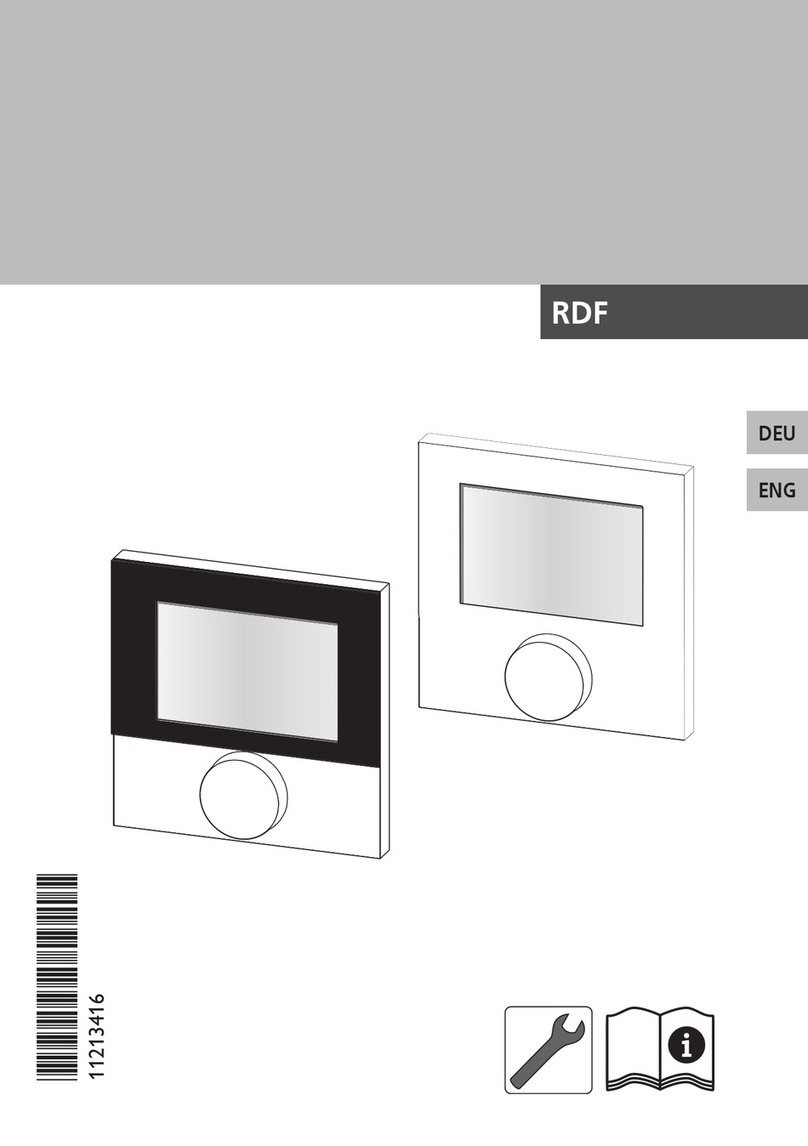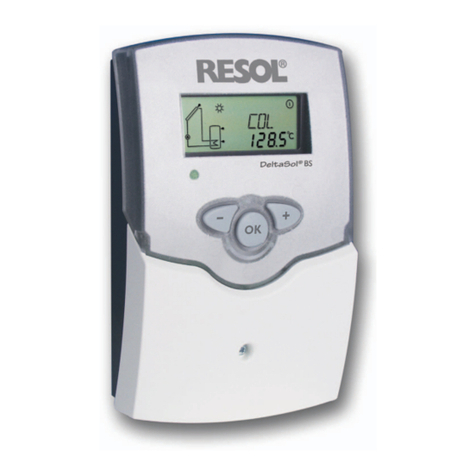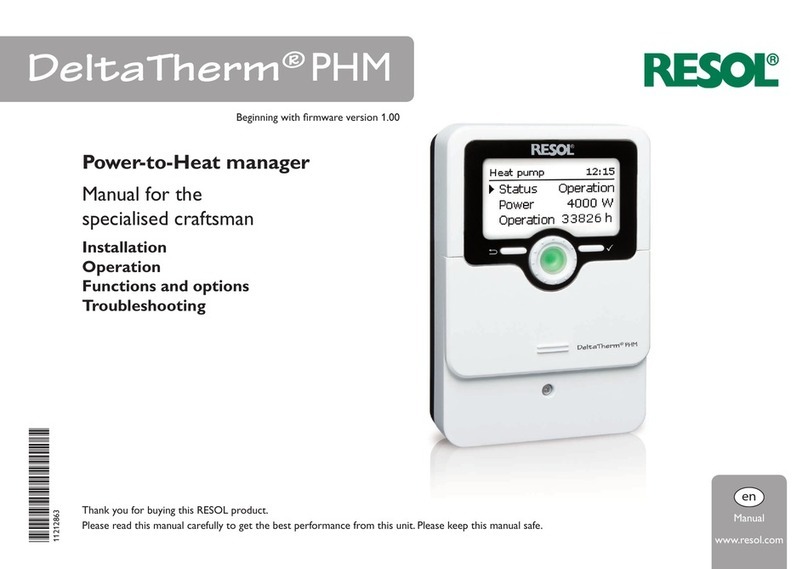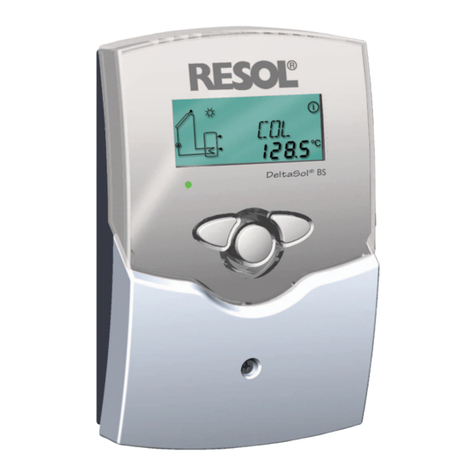
en
4
DeltaTherm®HC mini Heating controller
The DeltaTherm®HC mini offers a compact and user-friendly solution for simple
heating systems. It can control a weather-compensated heating circuit and its back-
up heating demand. Additionally, there’s a choice of 5 different operating modes, a
boiler protection option and a night correction. Due to the commissioning menu
and the 4 pre-congured basic systems, conguration is quick and easy. The chimney
sweeper function and the holiday mode can be activated by pressing a single button.
Contents
1 Overview........................................................................................................5
2 Installation.....................................................................................................6
2.1 Mounting....................................................................................................................................6
2.2 Electrical connection...............................................................................................................8
2.3 Data communication / Bus................................................................................................... 10
2.4 MicroSD card slot................................................................................................................. 10
3 Operation and function..............................................................................11
3.1 Buttons and adjustment dial............................................................................................... 11
3.2 Microbutton for chimney sweeper function / screed drying and holiday mode...... 11
3.3 Control lamp ......................................................................................................................... 11
3.4 Selecting menu points and adjusting values .................................................................... 11
4 Commissioning ...........................................................................................16
4.1 Schemes with basic settings ............................................................................................... 17
4.2 ErP temperature controls classes ..................................................................................... 18
5 Menu structure............................................................................................23
6 Main menu...................................................................................................23
7 Status menu ................................................................................................24
7.1 Heating.................................................................................................................................... 24
7.2 Meas./ Balance values ........................................................................................................... 24
7.3 Messages................................................................................................................................. 24
8 Heating ........................................................................................................25
8.1 Shared relays.......................................................................................................................... 25
8.2 Heating circuit ....................................................................................................................... 27
8.3 Screed drying......................................................................................................................... 33
9 Basic settings...............................................................................................34
10 SD card .......................................................................................................35
11 Manual mode ..............................................................................................36
12 User code ....................................................................................................36
13 In- / Outputs .................................................................................................37
13.1 Inputs....................................................................................................................................... 37
13.2 Outputs................................................................................................................................... 37
14 Troubleshooting ..........................................................................................39
15 Accessories..................................................................................................41
15.1 Sensors and measuring instruments................................................................................. 41
15.2 VBus®accessories................................................................................................................. 41
16 Index.............................................................................................................42












